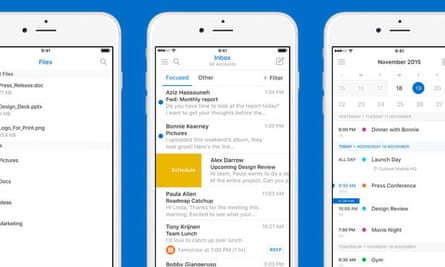Many of us have been using Orange/Freeserve/Wanadoo email accounts since they were introduced about 20 years ago. Now BT/EE plans to shut them down at the end of May 2017.
Many businesses were built on the back of these addresses, and large investments made using their contact information in brochures, product literature, business cards, letterheads etc. Having started to work out a migration plan, I realise I shall have to invest a substantial amount of time and money to move to a new email address. I also need a new account that allows me to download, archive and work offline with a suitable email client.
Is there any way that these email addresses can be kept operational? If not, what do you recommend? Duncan
Dixons launched Freeserve in 1998, and it was subsumed into France Télécom’s Wanadoo in 2000. Then France Télécom bought Orange UK, and changed its branding to Orange SA. In 2010, Orange UK merged with Deutsche Telekom’s T-Mobile UK to become EE (Everything Everywhere). Finally, BT bought EE for £12.5bn, completing the deal in January 2016.
The Guardian’s product and service reviews are independent and are in no way influenced by any advertiser or commercial initiative. We will earn a commission from the retailer if you buy something through an affiliate link. Learn more.
According to EE’s announcement, Orange Email Closure, it is killing off a long list of email addresses. These include Orange.net, Orangehome.co.uk, Wanadoo.co.uk, Freeserve.co.uk, Fsbusiness.co.uk, Fslife.co.uk, Fsmail.net, Fsworld.co.uk and Fsnet.co.uk. EE adds: “We haven’t given Orange email addresses to new customers since 2012.”
It would certainly be possible for BT/EE to provide a forwarding service so that you could retrieve your emails from a different email service. However, it’s time to move on. First, these mail addresses already look “spammy”, and your emails may be blocked. Second, using very old free email addresses – Hotmail, Yahoo, Freeserve, Wanadoo etc – does not create a good impression for your business.

It’s a minor miracle that Orange/Freeserve/Wanadoo email accounts have lasted so long, but it has enabled you to avoid the action you should have taken in 2005-07. That is, moving to Google’s Gmail, which was launched on 1 April 2004. You could have had a much better email service a decade sooner.
Own your own domain
You will never have to change your email address if you own it, so buy a domain name from one of the many providers. I’ve used Easily.co.uk for a long time, but readers will no doubt suggest their current favourites in the comments below. NameCheap and Godaddy are well known options.
Work out your preferred name or keyword in advance then search for it. Almost all the best domains (.com, .co.uk etc) will already have gone. However, there are now dozens of weird and sometimes wonderful options such as .biz, .shop, .guru, .Tokyo and .xyz, so one may be suitable for your business.
If you can’t get .com or .co.uk, I’d go for something short like .uk, .me or even .biz. You could get a .uk name from Easily for 10 years for £81.40, or .me or .biz for £79.99. Bad luck if you want .accountants because that costs £799.90 for 10 years.
Once you own the name, you can point it to whichever email service you like. If that email service goes out of business or locks you out of your mailbox, you can point it to a different email service.
I answered this question more fully in 2010, in advising readers to solve email problems forever by setting up Gmail with your own domain. Unfortunately, Google stopped supporting personal domain names in its free service, but you can do it with a Google Apps account for £3.30 per month. Google also offers a business service for £6.60 per user per month.
You could do the same thing with Microsoft’s Office 365 for Business for a little more money. This has the advantage of providing Microsoft Office (including Microsoft Outlook) on up to five PCs or Macs. Outlook (the software) works well with Outlook.com (the email service).
If you are going to pay for email, you should also consider Fastmail. It respects your privacy, doesn’t show any adverts, and includes good support. Fastmail offers dozens of addresses – fastmail.co.uk, ftml.net, elitemail.org, fea.st, sent.as etc – but you can also use your own domain name. It costs $5 per month or $50 a year with 25GB of email storage.
Having said all that, the number of email services has been reduced from thousands to dozens, and now there are only two free services that are worth joining: Google’s Gmail and Microsoft’s Outlook.com. I don’t think either company will go bust or stop offering email in the foreseeable future. If you sign up with both, you probably won’t need your own domain name, though it still looks better if you’re running a business.
Google shuffle
EE’s Orange Email Closure page provides a good guide to setting up a Gmail account and importing your old email into your new mailbox. There’s also a section on “How to set an away message using Orange Webmail”. This replies to emails with a message such as: “This email address is no longer in use. Please contact me at [your new email address]”.
Gmail will collect email from your old mailbox for a month. After that, you could set your Orange/Freeserve/Wanadoo account to forward email to your new email address, until it stops working.

The problem is Gmail will have all your emails, and Google can lock you out of your mailbox for some real or imagined crime. This week, for example, my Gmail account was “temporarily disabled” for “unusual usage”, ie deleting a lot of emails to stay inside the 15GB of storage that Gmail shares with Google Drive. Being locked out is a nightmare for people who use other Google services such as Google Analytics, Adsense, Adwords and Android phones, because the only sure ways to get back in are: 1. Know a senior Google employee. 2. Complain in a blog post that goes viral.
My solution, many moons ago, was to open a parallel account at Outlook.com, get Microsoft to import all my Gmail, and then set up Gmail auto-forwarding. Anything that arrives in my Gmail inbox (which uses my own domain name) automatically gets sent to my Outlook.com address (which has never run out of storage space).
If you use a desktop email program such as Microsoft Outlook or Mozilla Thunderbird, then this will provide a local backup of all your Gmail. Otherwise, download open source Gmvault to back up your Gmail to a local hard drive. Set it to sync your every night, after you’ve finished deleting the day’s junk. A key feature of Gmvault is that you can restore your old Gmail to a different Gmail account.
The nightmare begins
Thanks to mail forwarding and auto-responders, you shouldn’t lose any email, and not many contacts. The real problem is that dozens if not hundreds of services are using your email address. This includes web-based services such as Amazon, Spotify, Facebook and Twitter, your banks and insurance companies, and possibly some utilities and government services. You’ll have to change the email addresses in all the ones you want to keep.
Remember that if you are locked out of a service, or forget your password, the supplier will send the reset email to your old address. When your Orange/Freeserve/Wanadoo email address dies, it could take these other services with it.
Happily, if you’ve been using a password manager, it will remember all the websites where you opened accounts. You’ll still have to log on to each one to update your email address, but the rest of us are sure to miss a few.
And finally, you may be able to save some of your stationary with stickers and self-inking rubber stamps.
Have you got a question? Email it to Ask.Jack@theguardian.com

Comments (…)
Sign in or create your Guardian account to join the discussion